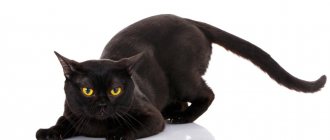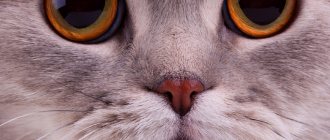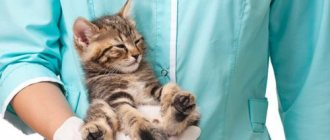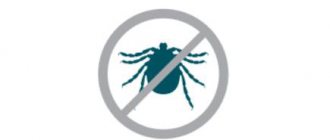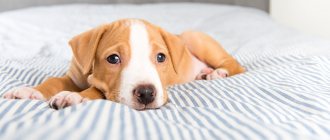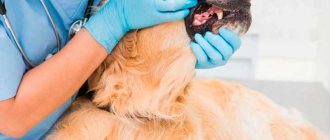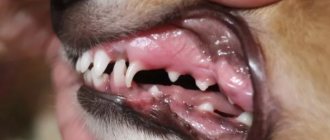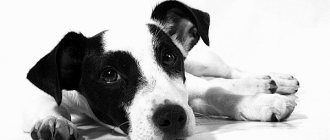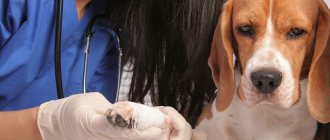Causes
A large amount of hair in the animal's body.
Cats, especially long-haired cats, ingest large amounts of hair during their daily toileting process. They can linger in the intestines, causing constipation. Therefore, in order to avoid serious digestive problems, the animal can be given special means to help remove hair from the body.
Diseases of the gastrointestinal tract.
Chronic inflammatory and infectious diseases can lead to blockage of the bile ducts. Bile ensures the emulsification (grinding) of fats by enzymes that break down proteins and carbohydrates. As a result of a decrease or cessation of bile flow, the process of food digestion sharply worsens, intestinal motility is weakened, as a result of which coprostasis subsequently occurs.
Intestinal tumors of various etiologies (causes).
Any neoplasm, even benign, can completely block the intestinal lumen. This in turn can lead to problems with fecal excretion and death.
A large number of helminths.
Their bodies can completely close the intestinal lumen. This situation is extremely dangerous, as it can lead to volvulus and rupture of the intestines. In addition, several times more toxins are absorbed into the blood.
Cavity operations.
A side effect of abdominal surgery is often adhesions (growth of connective tissue between the pelvic and abdominal organs, directly in the walls of the organs). A large number of them can lead to squeezing of the animal’s intestines. If the intervention was carried out directly on the intestines, connective tissue can grow in their walls, which also leads to compression.
Poor nutrition.
Eating by a pet things that are strictly forbidden to be consumed - chicken and fish bones, synthetic films from sausages, frankfurters and other meat products, household garbage - can block the intestinal lumen. In addition, bones, especially from river fish, can pierce and pierce the intestinal walls, which often leads to peritonitis (inflammation of the abdominal cavity).
Feeding with dry food.
For an animal that eats exclusively dry food, the bowl should be regularly filled with fresh water, because dehydrated feces are much more difficult to remove from the body. Otherwise, the animal’s digestive system may malfunction. An alarming sign indicating digestive problems is regular constipation. To avoid serious consequences, at the first symptoms you should contact your veterinarian and think about changing your diet.
What it is?
The name of the disease consists of two Greek words: “Kopros” - feces, “Stasis” - stop . Simply put, this is the name of a pathology in which feces in the intestines cannot freely move along their natural “route”, but accumulate in the body. All this causes severe intoxication, and is also fraught with ruptures and volvulus. So coprostasis needs to be eliminated as soon as its first signs appear.
By the way, what are the reasons for its occurrence? In most cases, it’s all about the animal’s improper nutrition. More precisely, eating those things that a cat definitely shouldn’t eat. This includes: chicken and fish bones, synthetic sausage casings, and other garbage. All these wastes are ways to completely clog the intestinal lumen, and residues from fish (river fish in particular) can also pierce and pierce the intestinal walls, which is fraught not so much with coprostasis as with fecal peritonitis.
It happens that infectious as well as chronic inflammatory diseases of the gastrointestinal tract are to blame. They often lead to blockage of the bile ducts, resulting in a sharp deterioration in the process of digesting food. This may well also cause a decrease in intestinal motility, which is why coprostasis occurs in the future.
Symptoms
It is not very difficult to clearly determine that your cat has coprostasis, because initially all the signs indicate severe constipation. When attempting to defecate, the animal may growl mournfully. In this case, feces come out of the pet’s anus in small portions, usually in the form of thin ropes or small ribbons, or not at all. This indicates that there is something in the cat's intestines that is preventing stool from moving normally. Then the pet's condition worsens. Attempts at evacuation do not produce results, loss of appetite, severe intoxication, apathy, even seizures and coma are observed. The cat's belly becomes hard and bloated.
What consequences can a cat have as a result of prolonged constipation?
The consequences of prolonged constipation in a cat are quite serious. As a result of prolonged constipation, a cat may experience:
- general intoxication of the body;
- rupture of the intestinal wall;
- disturbances occur in the functioning of internal organs and systems;
- the load on the heart increases.
Clinical picture . Constipation in a cat is accompanied by the following clinical signs:
- When visiting the litter box, the cat strains and strains a lot, and tries to empty itself. Even if she squeezes out something, it will only be a small amount and it will be very dry or too watery. Strained bowel movements can lead to rectal prolapse (cat rectal prolapse).
- When visiting the litter box, the cat meows weakly and makes very plaintive sounds, but she is unable to “go” to the litter box. The cat is in pain and discomfort.
- Due to gas accumulations in the intestines, bloating is noted, and the tummy is tense on palpation.
- In some cases, the cat vomits something white and foamy (cat vomiting).
- General depression sets in, the cat looks lethargic and helpless.
- The cat doesn't eat or drink anything at all.
- When examining the anus, swelling is clearly visible.
First aid
If you find that an animal has digestive problems, give it first aid. Limit your cat's food intake completely and give her fresh water regularly. No laxatives, especially saline laxatives, especially bisacodyl and other irritating drugs should not be given to your cat! Vaseline oil is relatively safe, but you should consult your doctor before using it. Cats do not like oil, and you will have to pour quite a lot of it, so make sure you have an assistant and good support for the animal. Unfortunately, petroleum jelly is effective only in mild cases when the stool is still soft. If your cat vomits after taking the oil, go to the doctor immediately!
Other causes of the disease
In young animals, the causes of “plugging” of the intestines may well be helminths. More precisely, there are many helminths, the bodies of which completely cover the miscalculation of the small intestine. This situation is the most dangerous, as it is fraught with rupture of the organ or its volvulus. In addition, several times more toxins are absorbed into the animal’s blood.
Attention! A very dangerous factor causing intestinal coprostasis in cats are intestinal tumors of all etiologies. Even if the neoplasm is benign, but its size is too large, it can contribute to the death of the animal due to complete blockage of the intestinal lumen.
Diagnostics and treatment in a clinical setting
The veterinarian may order x-rays with a contrast agent to determine whether the intestine is completely or partially obstructed, and, if possible, to see the cause of coprostasis in the image. Other visual examinations are also used, including diagnostic laparoscopy (minimally invasive examination through a puncture of the abdomen).
Clinical treatment of coprostasis depends on the causes of its occurrence. Overgrown adhesions, tumors, and bone remains can only be removed through surgery. It is known that neoplasms are amenable to chemotherapy, but if they put pressure on the intestines, there is simply no time for their treatment. In addition, compacted feces must be removed from the intestines. Therefore, be prepared that the doctor will offer to perform a laparotomy (full abdominal surgery) on the cat due to seemingly trivial constipation. Often this is the only way out.
Coprostasis in cats
Content
- Diagnosis of the disease
- Causes of the disease
- Treatment
- Prevention
We all know the daily routine of our pets (the routine of eating, activity, including fulfilling natural needs).
Some people are more attentive to this, others less so. When we notice that our pet does not have stool for more than a few days and this causes him discomfort, then naturally we turn to the veterinarian with the words: “Doctor, he has not had stool for more than 5 or 5 days.” days" After examining the patient, the doctor makes a diagnosis - coprostasis.
What is it? Intestinal coprostasis is a slowing down or stopping of the movement of feces through the intestinal lumen, with its blockage and the impossibility of natural emptying.
Outwardly, this is manifested by a periodic or constant urge to defecate with the presence of pain, a decrease in the volume of feces or complete absence (the consistency of feces is usually dense, can be very dry), refusal to eat, general lethargy and, in the case of a long process, the appearance of vomiting as a result intoxication.
Diagnostics
Diagnosis is based on a clinical examination (examination, palpation of the abdomen and assessment of other parameters) and radiographic data.
The images show a significant enlargement of the large intestine. In some cases, the intestine is so enlarged that it can occupy a significant volume of the abdominal cavity.
In most cases, the reasons are errors in the diet. Namely: excessive overfeeding, eating food that is not typical for cats (food from the table, eating thermally treated bones, etc.).
Taking medications that can provoke a decrease in intestinal motility.
Causes of the disease
Other reasons are related to health problems:
- Neurological diseases associated with deformation of the spine and, as a result, pinching of the nerves responsible for the functioning of the intestines.
- Some metabolic and endocrine diseases
- Neoplasms of the rectum (thickening of the intestinal wall and decreased tone)
Remember! That only a veterinarian can adequately assess the situation and draw a conclusion about the necessary treatment method.
Treatment
Therapeutic treatment. The use of petroleum jelly as a laxative, which passes transiently (without being absorbed) through the intestines, helps soften stool and enhance intestinal motor activity. Prescribed depending on the degree of coprostasis.
If the volume of feces is significant, then a deep cleansing enema with bowel movement is necessary. This procedure is performed under general anesthesia due to its pain and the need for careful execution.
Surgery. It is necessary if it is impossible and dangerous to carry out therapeutic treatment and is usually associated with a significant expansion of the intestinal lumen (megacolon) as a result of prolonged stagnation of feces and the impossibility of returning the size to its original size and, as a consequence, a decrease in contractility. In this case, surgical removal of the enlarged section of the intestine and suturing of the remaining ends is performed. After this procedure, the animal is kept in the rehabilitation department until its condition is stable. Subsequently, therapeutic treatment is applied depending on the underlying cause.
Prevention
Identification of the main cause of the disease and its elimination. Solving the diet issue. Prescribing a diet high in fiber. Prescribing medications containing lactulose to achieve softer stools.
Proper feeding and regular exercise (activity of your pet). Preventive examinations by a doctor.
Be attentive to your pet's proper nutrition, exercise regularly, visit your veterinarian, and your pet will avoid this problem. Health to you and your pets.
The article was prepared by doctors of the therapeutic department "MEDVET" © 2015 SEC "MEDVET"
Disease prevention
To prevent such problems, you can use special products aimed at optimizing digestion processes and normalizing the cat’s intestinal microflora. For example, the Vetelakt feed additive contains prebiotics, lactose and other substances. It stimulates the growth of lacto- and bifidobacteria, helps suppress pathogenic microflora, stimulates intestinal motility, has a laxative effect, and promotes the healing of damaged mucous membranes. You should also choose the right food for your cat, be sure to control water consumption and use a hair removal paste from time to time.
